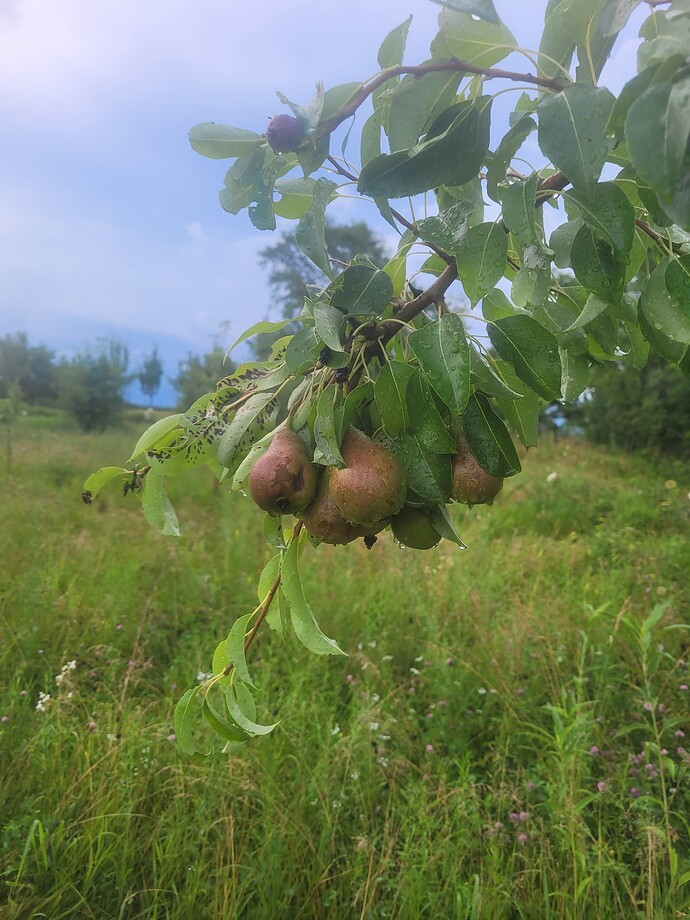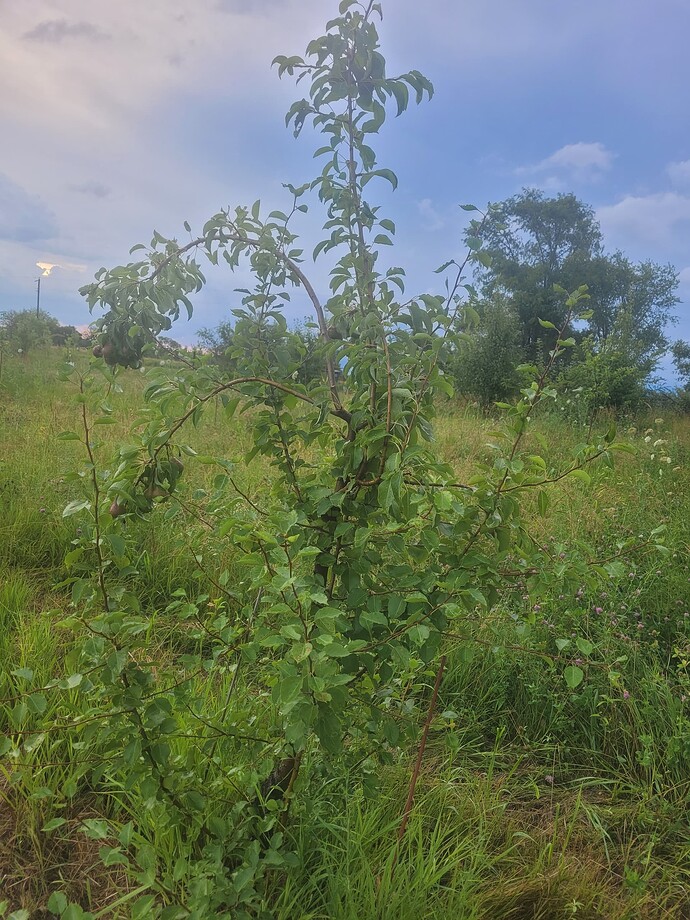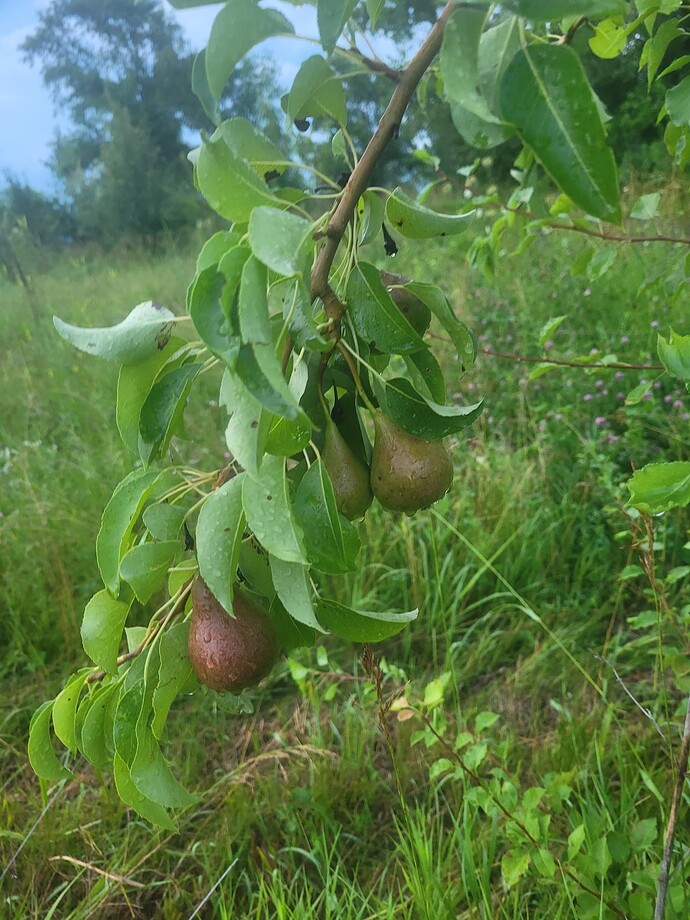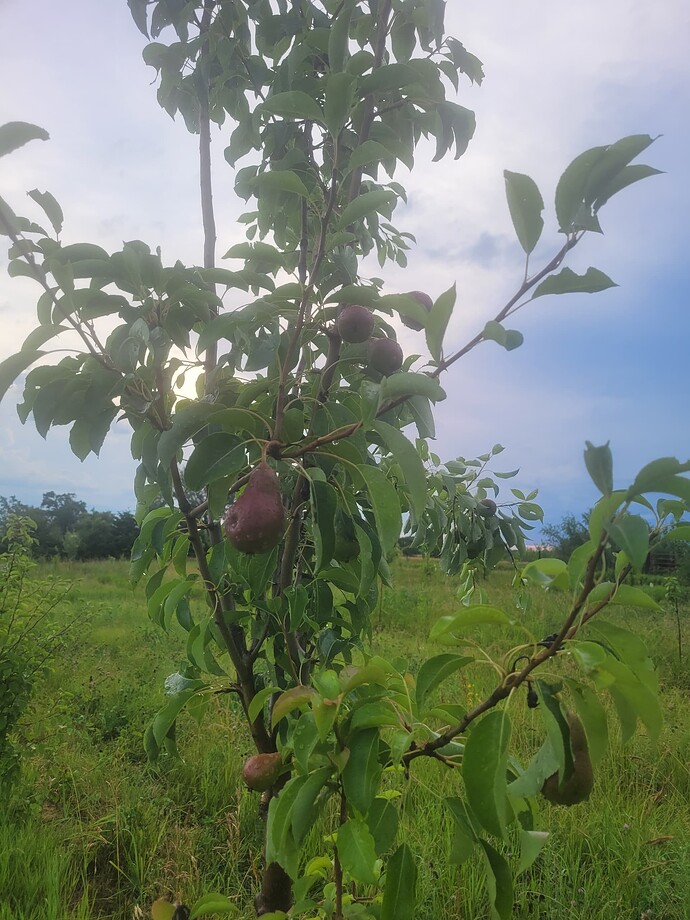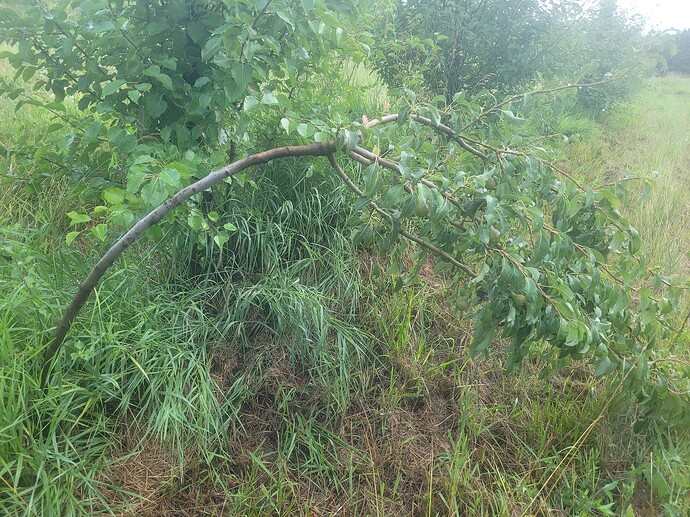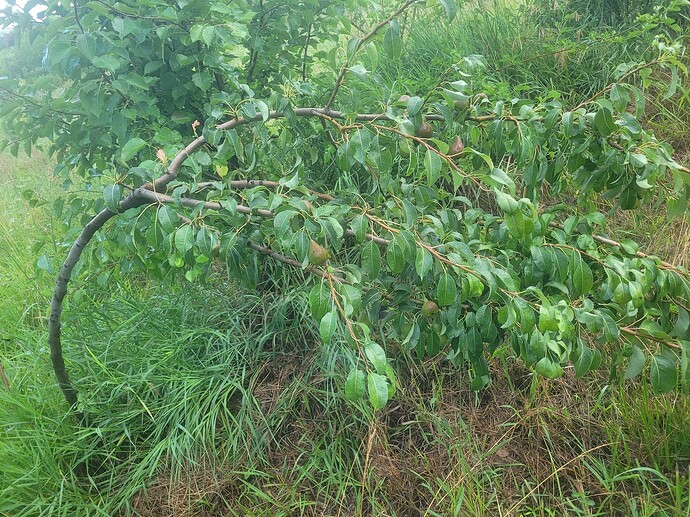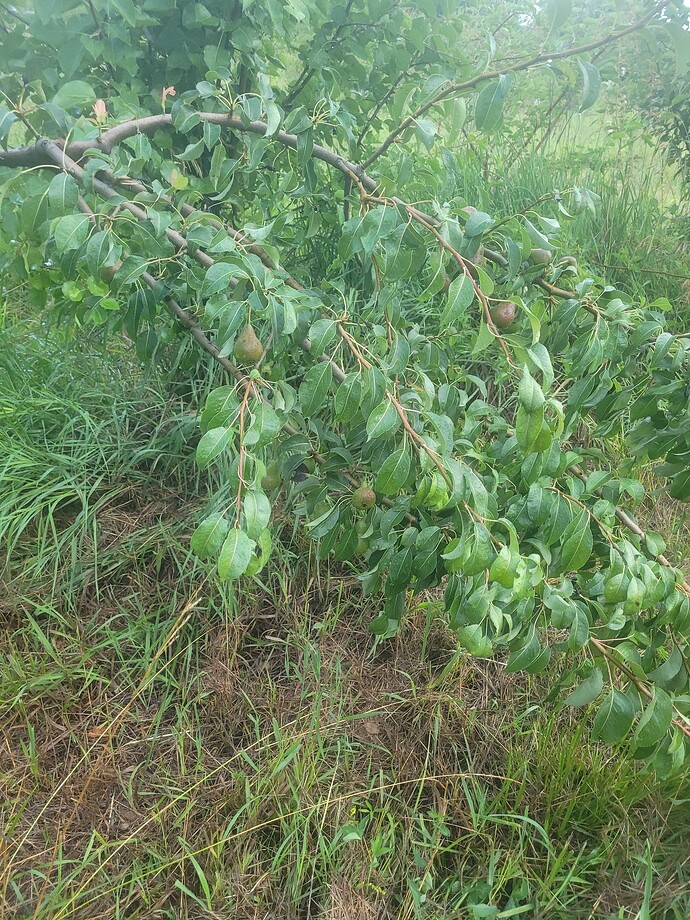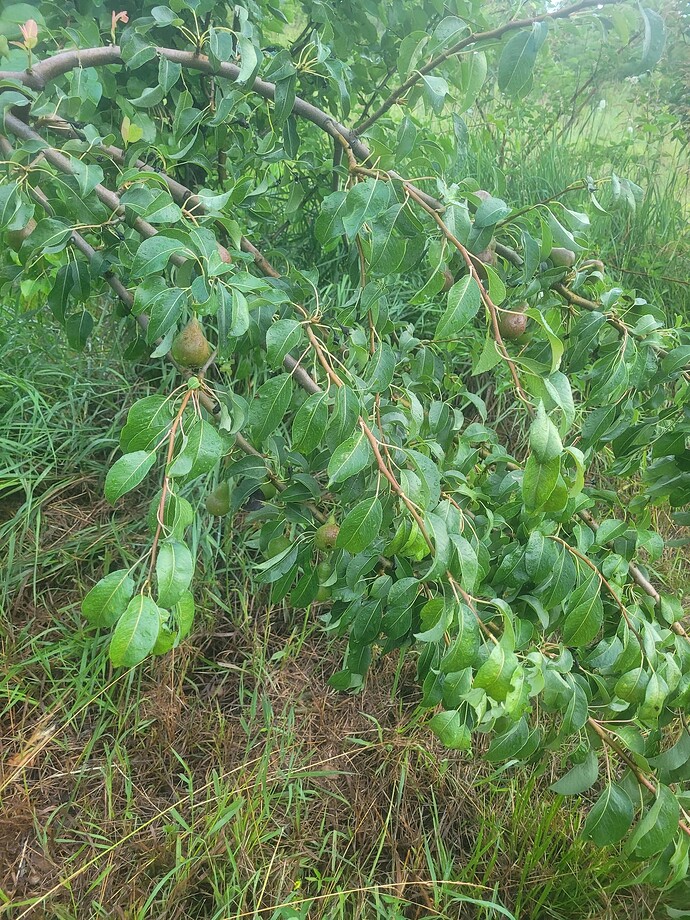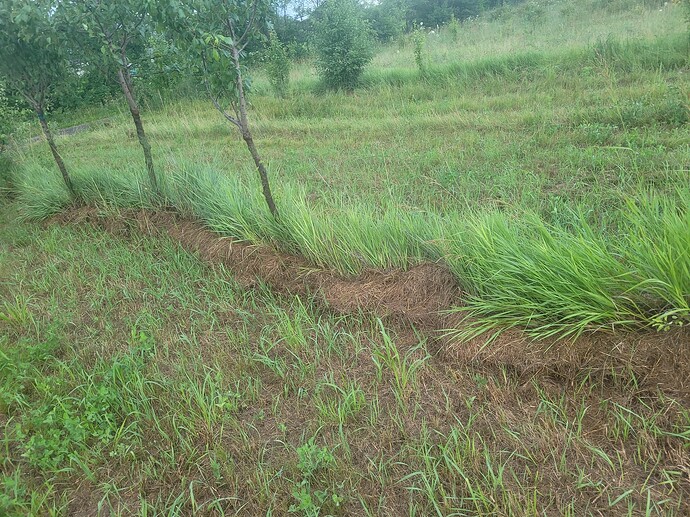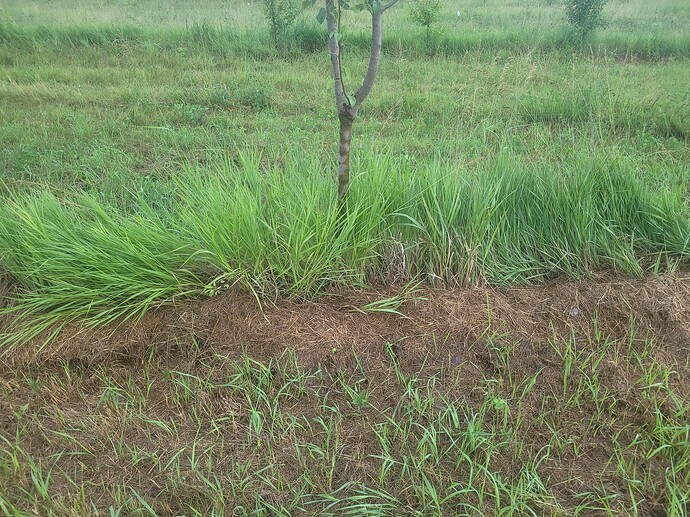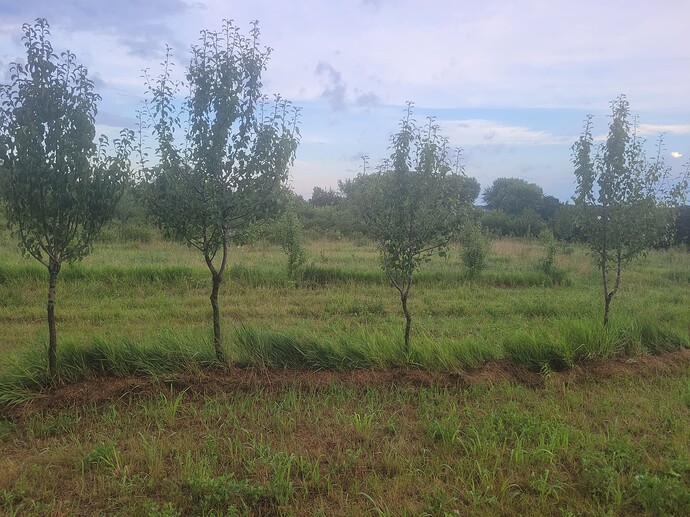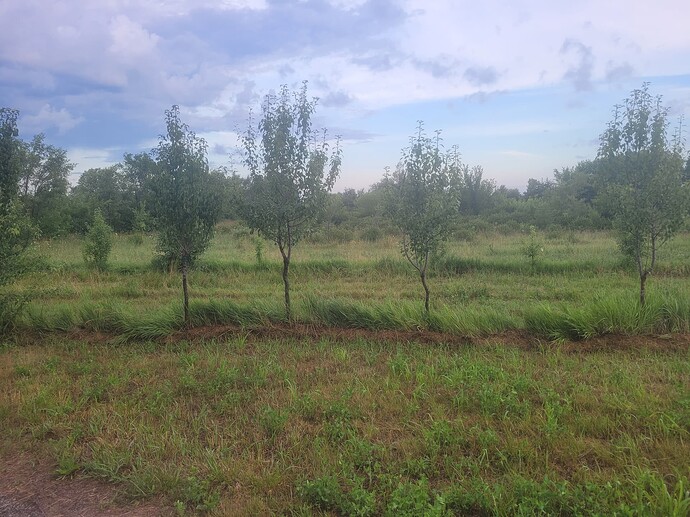I have a couple of 2 year old pears that have really outdone themselves on BET and callery rootstock. I let the rootstock grow one year on its own ungrafted. I missed thinning the fruit on these since they are remote in the orchard. They have not even been pruned yet. At a glance it appears staking will be needed. Heavy pruning for the first time will be necessary also.
Since i didn’t use chemicals or sprays you might wonder how an unfertilized pear could grow so quickly. It might appear im doing everything wrong. It is a strategy and not an accident these trees shot up without fertilizer. Once or twice a year i mow strategically sweeping the mulch to the pear trees like this
These two rows is what they will look like at 4 or 5 years old.
The bigger rootstocks there in the photo went a bit to long, and i grafted them over in spring of 2022. Here is the thread Grafting large Callery and Betulifolia pear rootstocks
The trees to small to graft then were grafted in 2023 like those pictured were one year old. Technically that makes the roots 3 years old.
I’m doing two things here giving them grass as fertilizer. Grass as something to hold the moisture. Think of it as manure that hasn’t been through the cow yet. I’m also building a wall for winter to catch the snow for water all winter. You might question my methods but you cant question the results. Leaving the pears on was a mistake! There is another thing that is less than obvious i’m doing. Every bird coming through sits in these branches pooping on these trees. Every rabbit looking for a remote woodline to hide in will sleep here and poop here. They dont like the taste of these rootstocks. Very soon i will hit all these trees with composted manure and woodchips. That is when the real magic happens.
